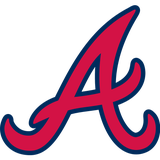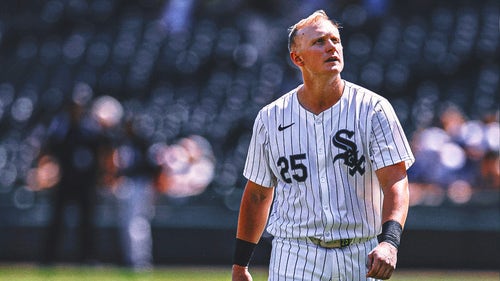
Atlanta Braves: A Tale of Two Halves

The Atlanta Braves offense has been a well-oiled machine in the second half of 2016.
The Atlanta Braves‘ win against the New York Mets on Wednesday night perfectly encapsulated the second half of their season.
Down 3-0 late in the game, the Braves scored two in the seventh, one in the eighth, and one in the ninth to take the lead. The drama didn’t end there, as Yoenis Cespedes hit a towering fly ball to right-center field in the bottom half of the inning in what appeared to be a defining moment in the Mets’ push for October. Instead, Ender Enciarte reached up and took away a would-be walk-off home run to end the game:
That never-say-die attitude has become a theme with this Braves team, as their 12 come-from-behind wins are the most of any National League team since the All-Star break. Although their record barely sits below .500 post the break, the Braves have more wins in the second half (32) than they did in the first half (31) in 22 fewer games and are playing the role of spoilers for teams vying for a postseason spot.
More from Call to the Pen
Atlanta is currently riding a seven-game winning streak and has gone 13-8 in September with five of those victories coming against the Wild Card-seeking Mets, including a three-game sweep of them earlier this week. They’re no longer pushovers like they were in the first half and have gained the respect of opposing teams around the league to not overlook them on the schedule.
The offensive output has been the difference in the Braves’ turnaround in the second half of the season. Before the All-Star break the Braves were reeling on offense, ranking last in the major leagues in batting average (.237), on base percentage (.300), and runs scored (307).
Since then the offense has been clicking on all cylinders, leading the majors in those first two categories with a .279 average and .347 OBP while scoring 303 runs, the fifth-most in the league. That’s more than the high-octane offenses of the Chicago Cubs and Texas Rangers.
Matt Kemp is one of the few newcomers that has ignited the club, as he’s slashing .295/.346/.521 with 10 homers and 35 RBIs in 48 games after being acquired by the Braves back in August. More importantly, he’s provided perennial All-Star Freddie Freeman some much-needed protection as the cleanup hitter.
Prior to Kemp’s arrival, Freeman saw 39.1 percent of pitches in the strike zone. Since Kemp was inserted into the lineup, that number has risen to 43.4 percent. As a result, the Braves’ cornerstone first baseman is slugging .631 with a 178 wRC+ in the second half, both of which rank second in the NL behind Cincinnati Reds’ own first baseman Joey Votto.
The other fresh faces – the aforementioned Ender Inciarte and Dansby Swanson – who were both part of the deal that sent Shelby Miller to the Arizona Diamondbacks in the offseason, have been key contributors in the Braves’ attempt to get back to respectability. Inciarte ‘s red-hot second half has him owning an MLB-best 94 hits since the All-Star break, while Swanson, the number one overall pick in last year’s draft, is batting over .300 following his highly-anticipated call-up in mid-August.
Given their recent play and the plethora of young talent waiting in the wings down in the minor leagues, the Atlanta Braves appear to have a bright future ahead of them.
This article originally appeared on



